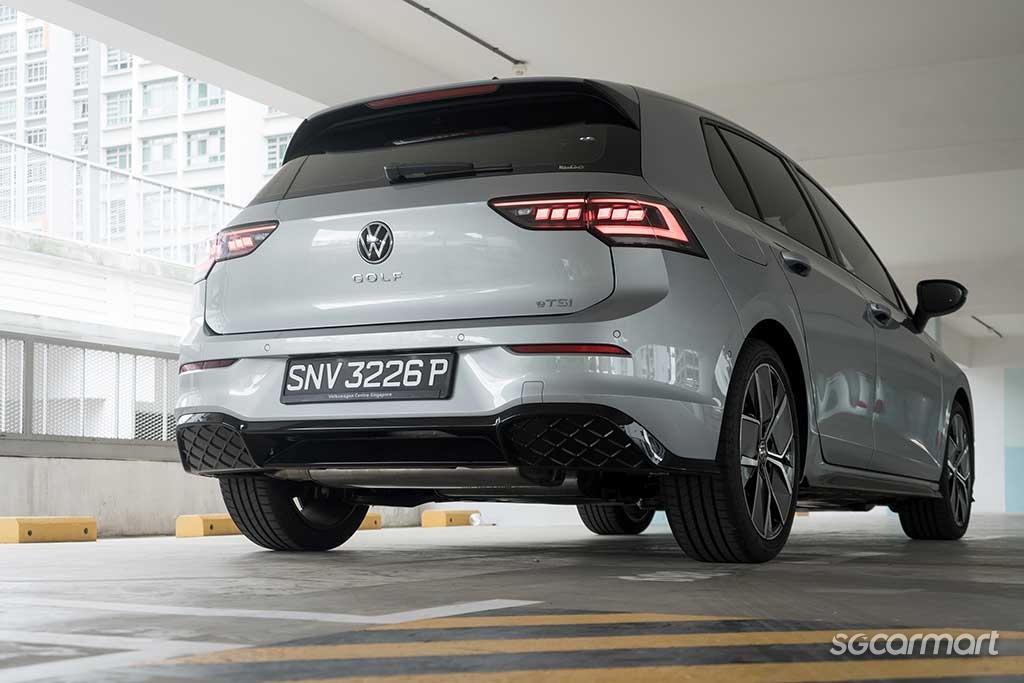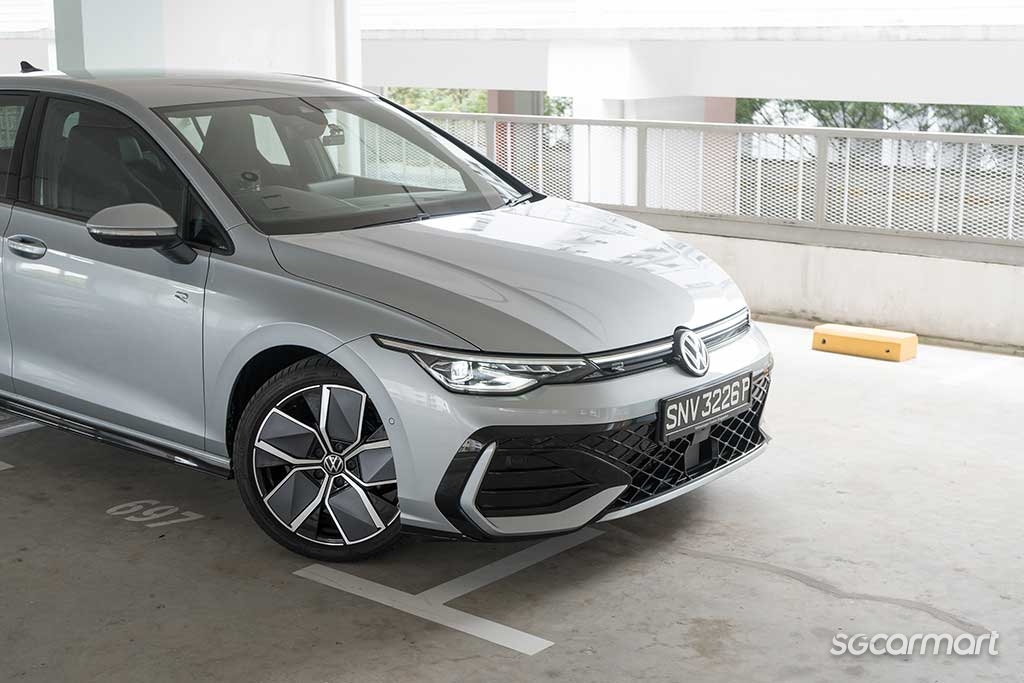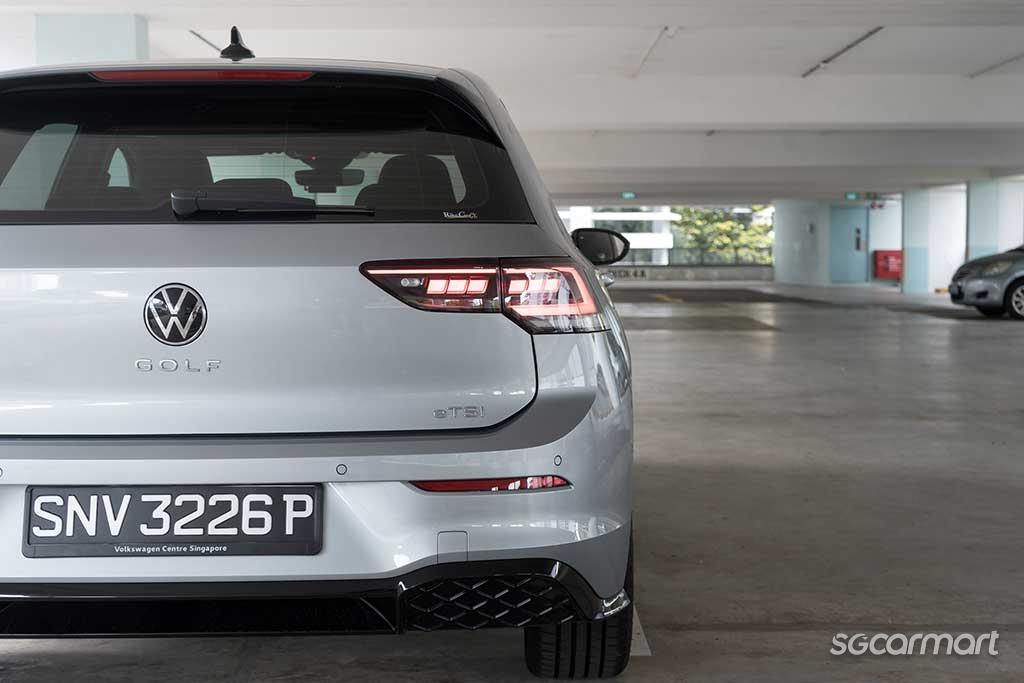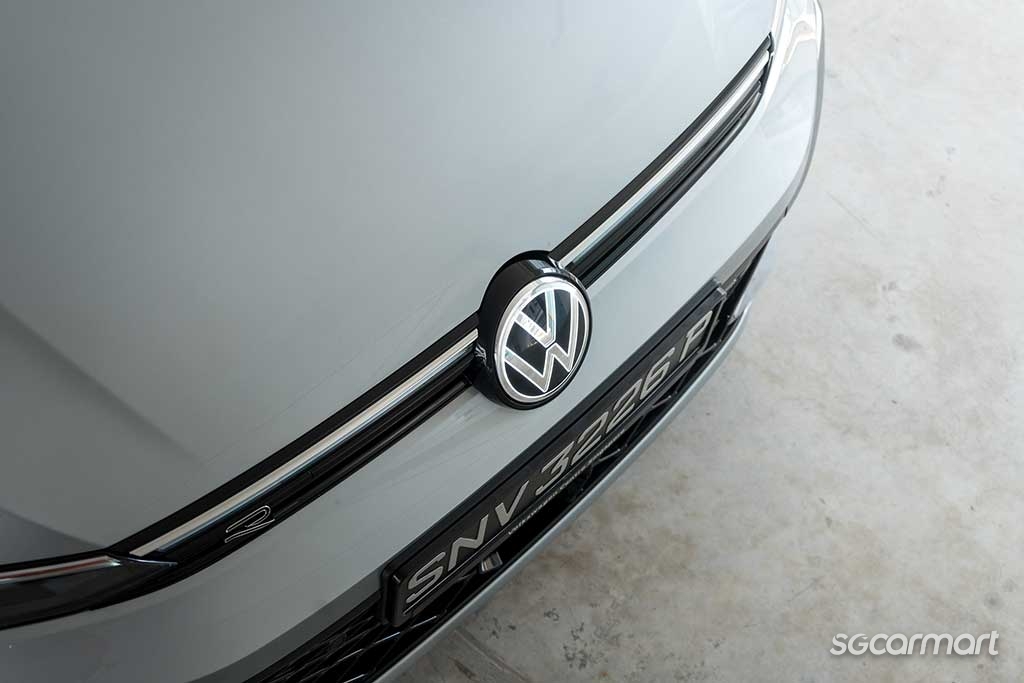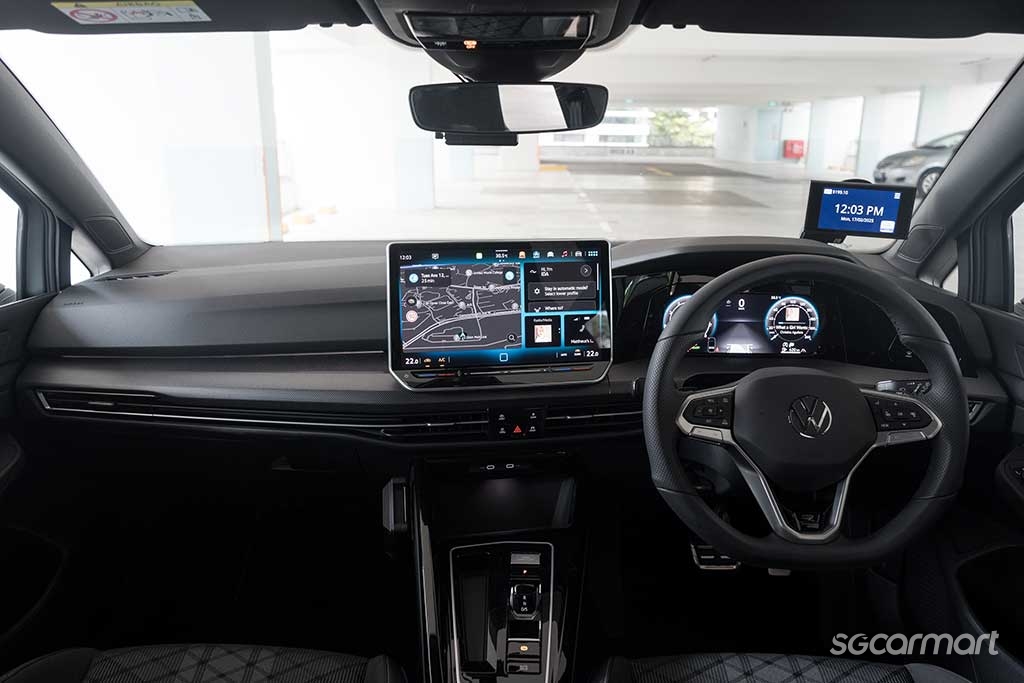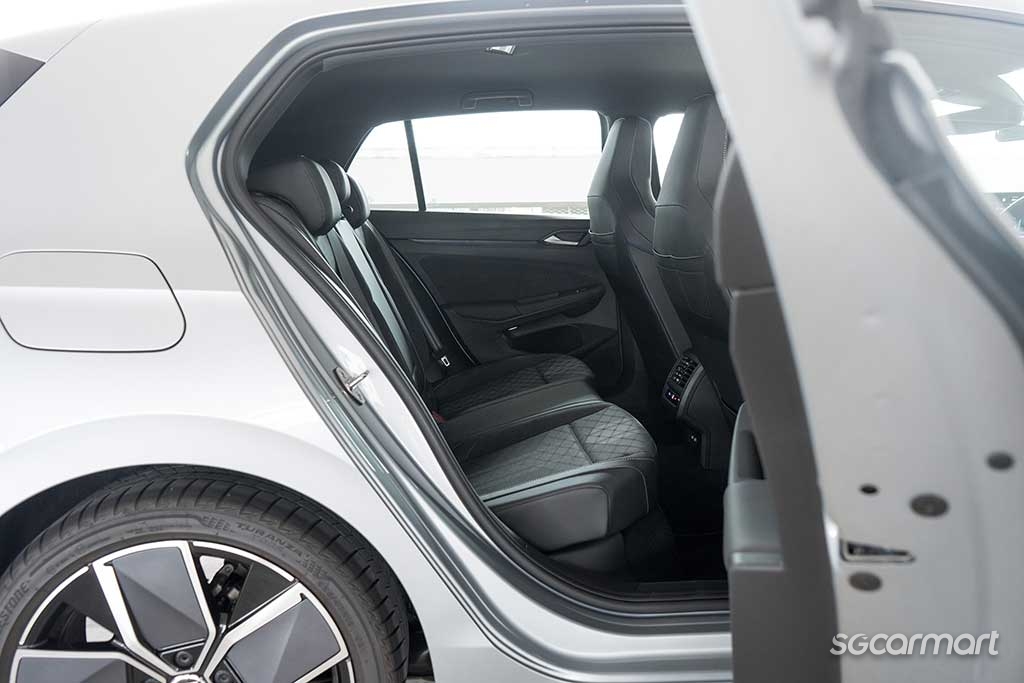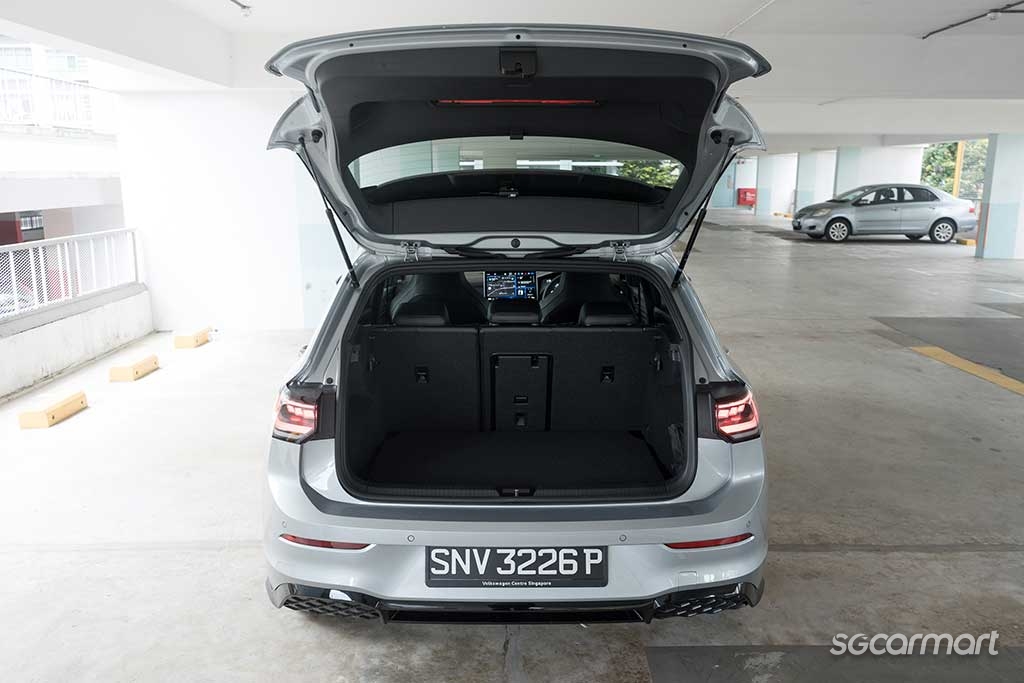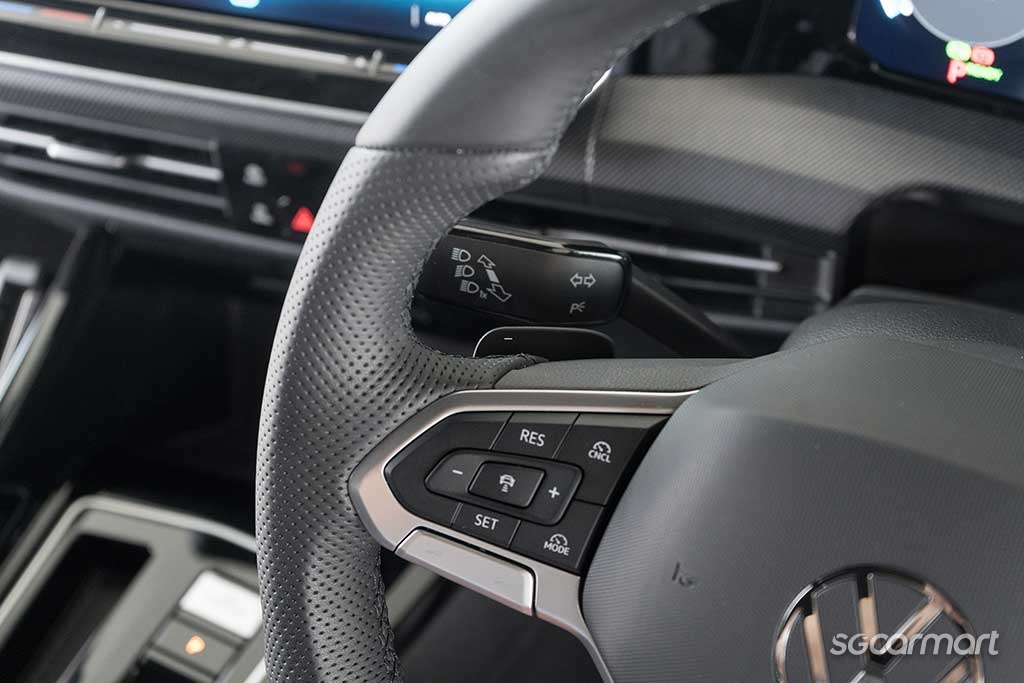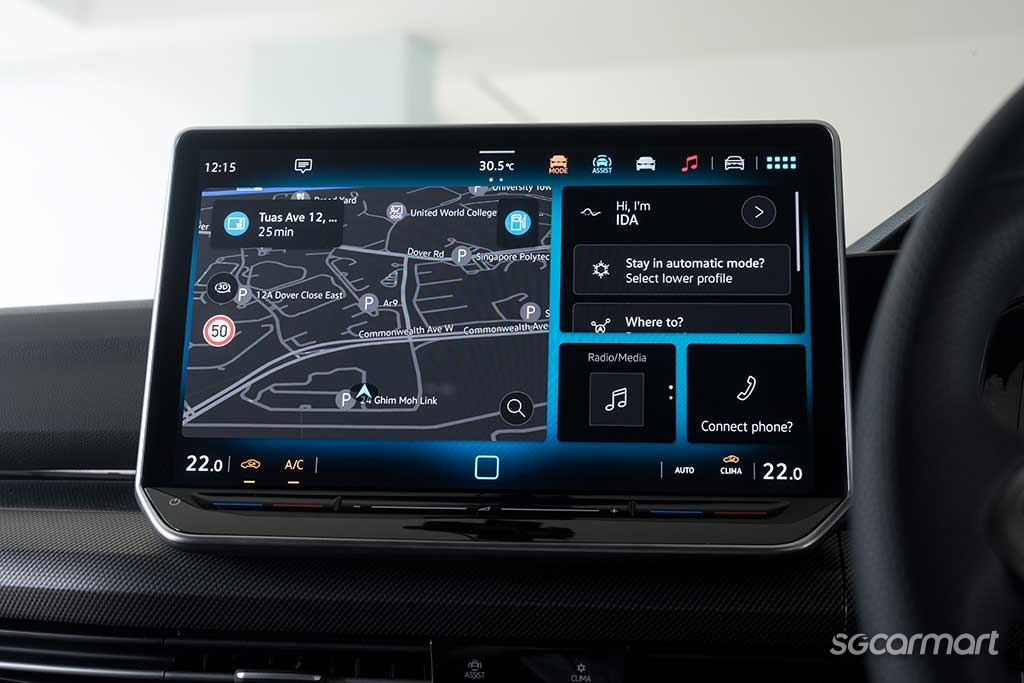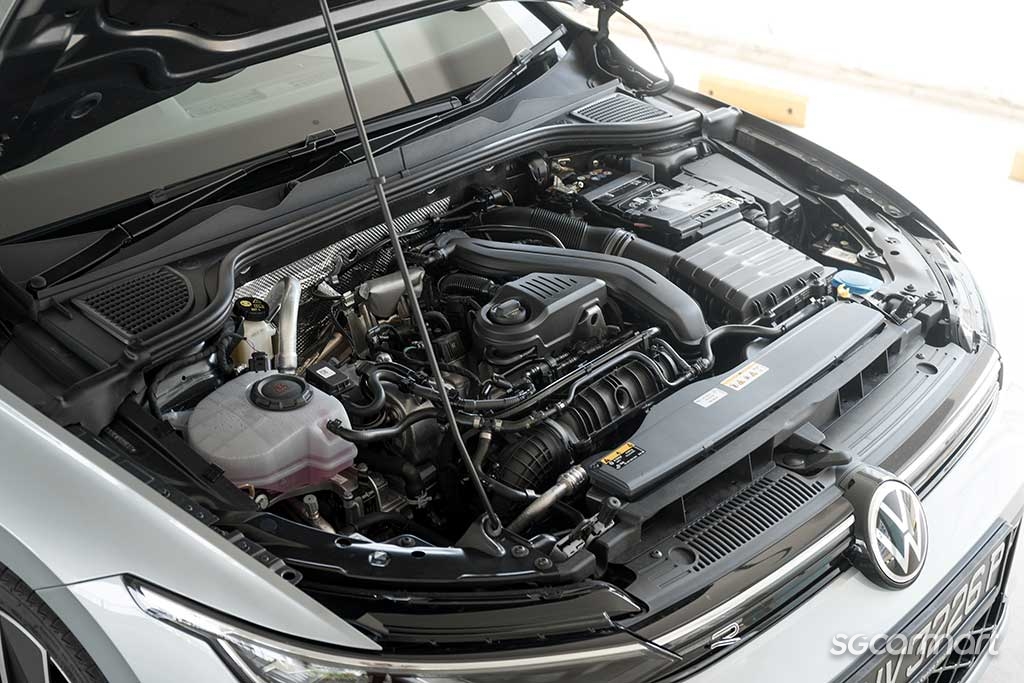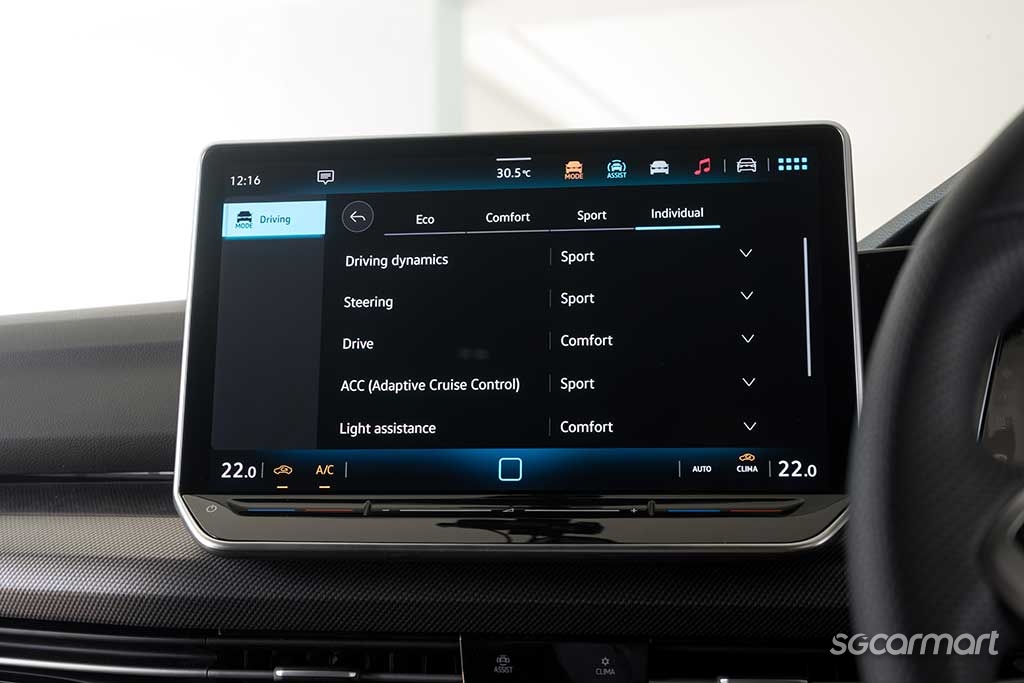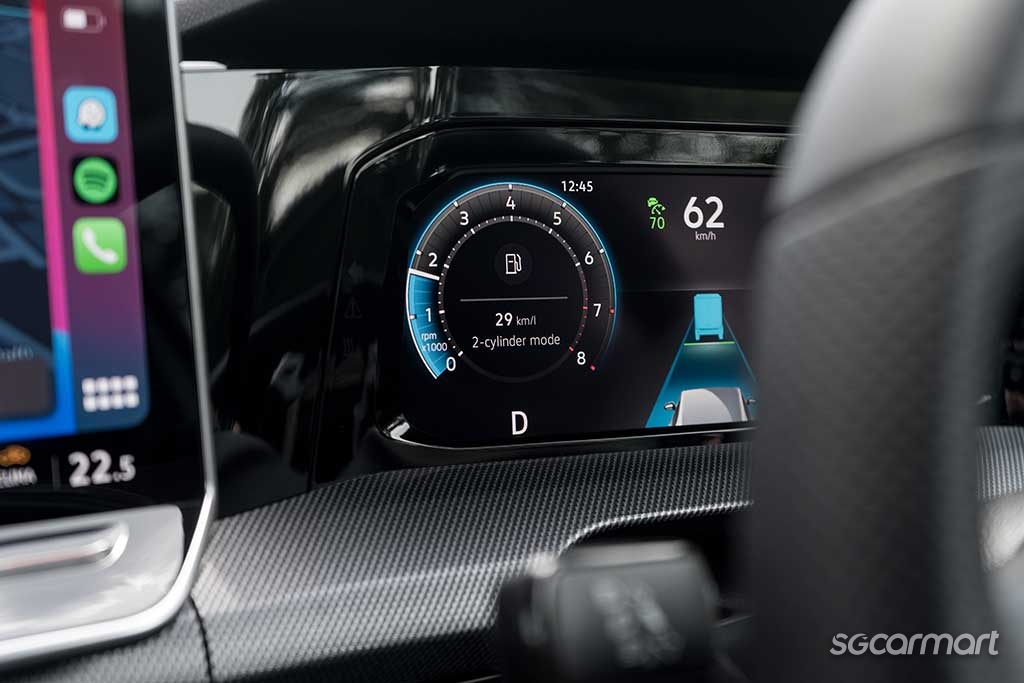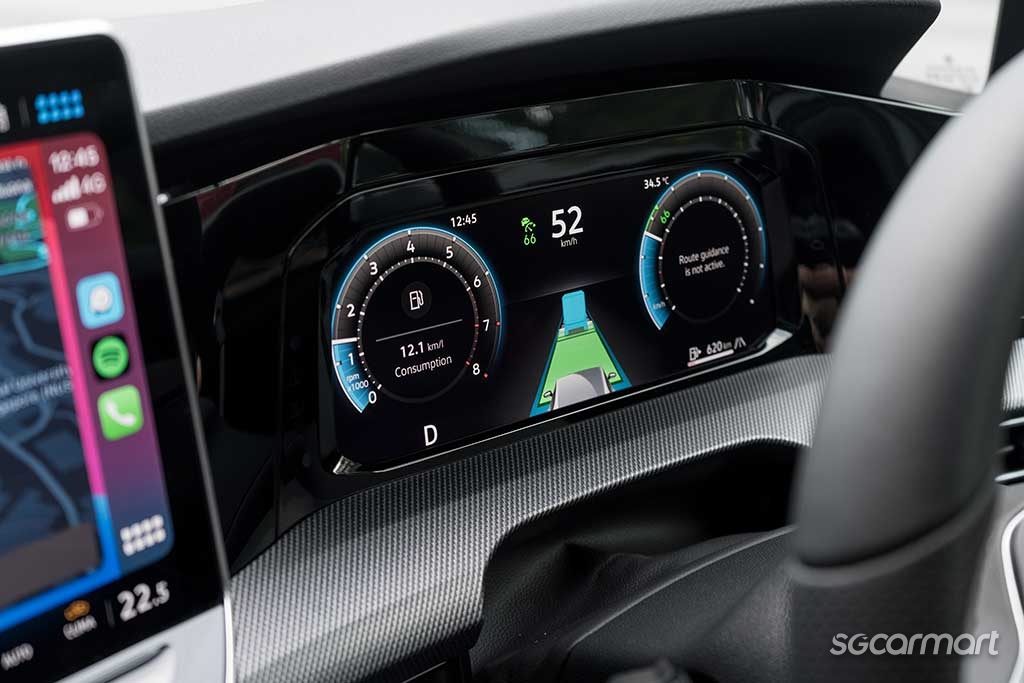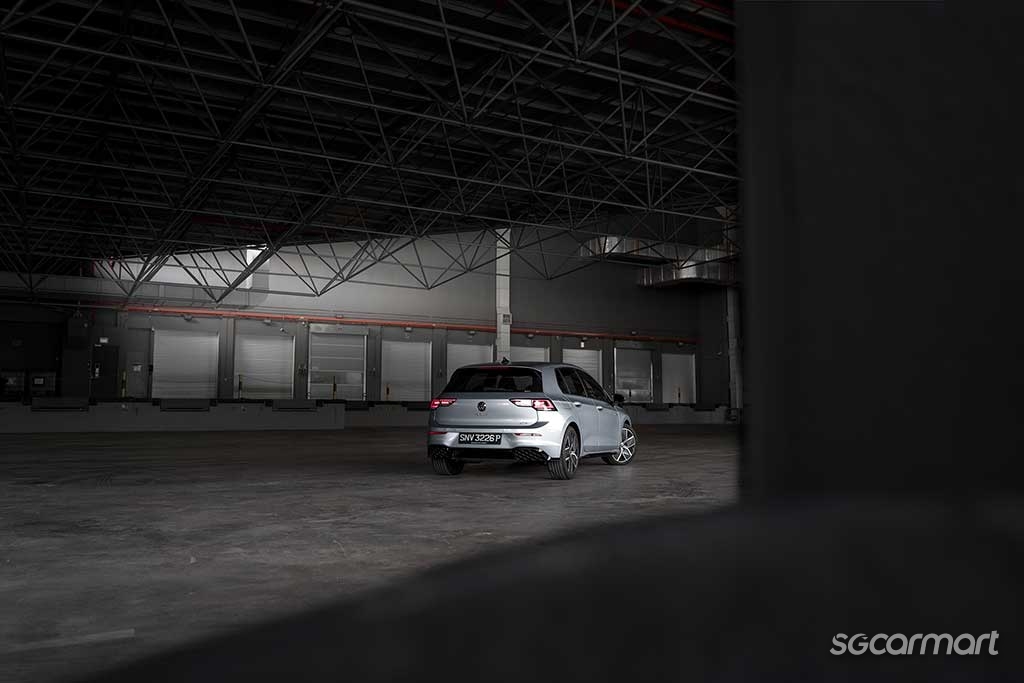Volkswagen Golf R-Line Facelift Review
27 Feb 2025|23,591 views
Facelift (What's New)
Updated styling, including new head and tail light clusters, new bumpers, and illuminated front badge
Return of physical buttons to steering wheel
New freestanding 12.9-inch touchscreen with latest-gen infotainment system
1.5-litre engine now tuned to 114bhp and 220Nm of torque
The Golf moniker needs no introduction. In fact, it's seared itself into the consciousness of the automotive community so successfully that name-dropping has been replaced by number-dropping. 'Mk6' or 'Mk7' could technically refer to any sixth or seventh-generation car - but when one hears these phrases, they're likely to immediately think of Volkswagen's bestselling hatch.
It wasn't long after Mk8 dropped, however, that folks started to look forward to… a slight re-introduction.
To be clear, the hatch still drove as well, offered as much space and practicality as its forebears, and introduced delightful firsts, such as mild hybridisation and a more upmarket cabin. But as it stepped into the present, it was also marred slightly by frustrating UX issues: Slider controls that wouldn't illuminate in the dark, and on the top-end R-Line trim, even capacitive touch buttons.
By Volkswagen's own words, the Mk 8.5 that lands now marks not a revolution but an evolution of the original eighth-generation car. And judging by the enhancements it carries, fewer folks should second-guess now that this is a step in the right direction.
We'd say that unless one were a fan of the Golf, the differences would be hard to spot.
But since there are indeed many people who seem to like the car, they shouldn't have trouble picking up immediately on the new head light clusters, which seem to bear the same human-eye inspired sculpting seen on the ID.4 and ID.5. Like those fully-electric siblings, new three-dimensional pieces have found their way into the tail lights too, putting on an intriguing show as they light up piece by piece.
The Golf's taillights have gotten three-dimensional clusters - not unlike those on the ID.4 and ID.5 - that light up piece by piece
As with its direct predecessor, this R-Line trim continues to be fronted by a light band that connects its two head lights. But the updated car is extra ostentatious: With illumination on its front badge, to further remove any doubt among passers-by that what you're driving is top-shelf.
New bumpers have also emerged on this half-new rodeo, taking the form of criss-crossing black gloss pieces both up front and behind in this R-Line trim. If you didn't like the faux-exhausts of the previous car, you're in luck.
Critics might brush the Golf's design and boxier silhouette off for being staid and nondescript - especially in a world where conventional body-style markers are no longer so well-defined.
But it's easy to forget that sensibility has practical benefits. That flat roofline means that even an average sized adult relegated to the rear middle seat will not find his hair brushing the headliner, while the light flooding in through those large squarish windows make it easy not to miss the presence of a panoramic sunroof.
Thanks to its boxy shape, rear passenger space continues to be surprisingly generous for its segment, while its 380-litre boot is of a nice handy shape for stowing items
The 380-litre boot is of a perfectly usable size and shape too, and while similarly-sized sedans do offer more space by default, it must be remembered that the hatchback shape allows for more versatile see-sawing between carrying passengers or more goods.
While holding on tightly to these inherited strengths, the new Golf - as mentioned earlier - improves on the most noteworthy pain point many had about the previous car.
"We are bringing back the push-button steering wheel! That's what customers want from VW," Volkswagen CEO, Thomas Schafer, famously noted in a LinkedIn post nearly two years ago. And true to that, the updated Golf in this R-Line trim has replaced its capacitive touch buttons of old for proper physical ones.
Key to the interior updates this time are the return of physical buttons alongside the introduction of a new 12.9-inch infotainment screen
Nevermind that these were previously found already on the lower-end Life and Life Plus trims - physical buttons that depress with reassuring weight feel more expensive and are far nicer to live with over the long run anyway, even if a full gloss-black finish on the steering wheel functions might appear more upmarket.
Also new on the updated Golf is a freestanding 12.9-inch infotainment touchscreen, seen on the likes of the Tiguan and electric VWs so far.
The previous infotainment units worked fine, but this one takes a good step up. It's clear and crisp, snappy to touch inputs, and arguably runs the nicest graphics from the brand to date. As with most large screens from modern carmakers, it takes some time for the mind to get used to the layout and navigation pathways. But take a few days to get acquainted and work out your favoured customisations, and things fall naturally into place.
Arriving just as the COE-premium fever reached its peak saw the Mk8 Golf experiencing not just one but two rollouts.
The first units that took to Singapore's roads were equipped with a 1.5-litre mild hybrid engine producing a relatively stout 148bhp and 250Nm of torque; they were thus also lumped with a Category B COE. As the latter skyrocketed to the high heavens, however, a less powerful variant with the same engine made the swim over, its output standing strategically at 129bhp and 200Nm of torque. (As a gentle reminder, the Category A power ceiling is 130bhp.)
Lesson learnt, the only powertrain offered on this Mk8.5 Golf for now (GTI excluded) pushes it straight towards Category A, with its engine tuned to 114bhp and 220Nm.
To address the elephant in the room, the power drop might raise eyebrows at first (and indeed, the car's official century sprint timing is now half a second slower than its direct predecessor's). But all things considered, it's not a massive drop, and the additional flip side is that there's also that extra bit of torque to factor in, which doesn't require much working for since all of it already arrives between 1,500rpm to 3,000rpm.
Remember that this is the R-Line - and not the R or indeed the GTI - and one will find that the updated Golf still feels plenty perky in a mostly built-up environment like Singapore's. Most notably, it's relatively light off the line, and able to push forward capably enough when the need to overtake arises. Only in higher revs does the engine's buzzy tone start to grate slightly.
Unsurprisingly, the car feels even more capable when tackling bends, boasting eager turn in and nicely-weighted and accurate steering, with the sports suspension further contributing to the palpable lack of body roll. The Golf may not boast the bursts of instant torque found on newer electric rivals - but neither is it saddled with their weight, reluctance to engage the driver, or relative lack of character.
Despite tending towards the stiffer side, its ride remains very settled too, whether on the highway or in the city. What's more, the sport seats are not just supportive but supremely comfortable with their microfleece (rather than leather) upholstery. Behind the wheel, one is reminded again why this has defined the hatchback segment for decades.
The mild hybrid system of the Golf allows it to deactivate two of its four cylinders where possible, allowing it to sip fuel more efficiently. Meanwhile, the car is decked out with a whole host of safety assistance systems, including adaptive cruise control and blind spot monitoring
With its eTSI mild hybrid engine, the Golf is also decently adept at sipping fuel. In mixed urban-expressway conditions and with a heavy-ish foot, we were hitting approximately 14km/L on our drives, so it stands to reason that nudging the car's fuel economy closer to its official 15.4km/L figure is entirely possible for regular cross-island routes broken up by fewer traffic lights.
More than just a highly-accomplished (if rather pricey) family car, the updated Golf satisfies and delights so well because it embodies the spirit of its parent: As a brand that listens to The People, and by extension a maker of the The People's Cars.
Even as (electric) compact crossovers gain increasing foothold, the Golf - as a recognisable family hatch delivering the right mix of fun, practicality and desirability - continues to stand on steady ground.
Don't forget to check out our reviews of other recent compact hatchbacks here!
The Mazda3 Hatchback impresses with its sleek sheet metal, premium cabin and mild hybrid engine
Facelift (What's New)
Updated styling, including new head and tail light clusters, new bumpers, and illuminated front badge
Return of physical buttons to steering wheel
New freestanding 12.9-inch touchscreen with latest-gen infotainment system
1.5-litre engine now tuned to 114bhp and 220Nm of torque
The Golf moniker needs no introduction. In fact, it's seared itself into the consciousness of the automotive community so successfully that name-dropping has been replaced by number-dropping. 'Mk6' or 'Mk7' could technically refer to any sixth or seventh-generation car - but when one hears these phrases, they're likely to immediately think of Volkswagen's bestselling hatch.
It wasn't long after Mk8 dropped, however, that folks started to look forward to… a slight re-introduction.
To be clear, the hatch still drove as well, offered as much space and practicality as its forebears, and introduced delightful firsts, such as mild hybridisation and a more upmarket cabin. But as it stepped into the present, it was also marred slightly by frustrating UX issues: Slider controls that wouldn't illuminate in the dark, and on the top-end R-Line trim, even capacitive touch buttons.
By Volkswagen's own words, the Mk 8.5 that lands now marks not a revolution but an evolution of the original eighth-generation car. And judging by the enhancements it carries, fewer folks should second-guess now that this is a step in the right direction.
We'd say that unless one were a fan of the Golf, the differences would be hard to spot.
But since there are indeed many people who seem to like the car, they shouldn't have trouble picking up immediately on the new head light clusters, which seem to bear the same human-eye inspired sculpting seen on the ID.4 and ID.5. Like those fully-electric siblings, new three-dimensional pieces have found their way into the tail lights too, putting on an intriguing show as they light up piece by piece.
The Golf's taillights have gotten three-dimensional clusters - not unlike those on the ID.4 and ID.5 - that light up piece by piece
As with its direct predecessor, this R-Line trim continues to be fronted by a light band that connects its two head lights. But the updated car is extra ostentatious: With illumination on its front badge, to further remove any doubt among passers-by that what you're driving is top-shelf.
New bumpers have also emerged on this half-new rodeo, taking the form of criss-crossing black gloss pieces both up front and behind in this R-Line trim. If you didn't like the faux-exhausts of the previous car, you're in luck.
Critics might brush the Golf's design and boxier silhouette off for being staid and nondescript - especially in a world where conventional body-style markers are no longer so well-defined.
But it's easy to forget that sensibility has practical benefits. That flat roofline means that even an average sized adult relegated to the rear middle seat will not find his hair brushing the headliner, while the light flooding in through those large squarish windows make it easy not to miss the presence of a panoramic sunroof.
Thanks to its boxy shape, rear passenger space continues to be surprisingly generous for its segment, while its 380-litre boot is of a nice handy shape for stowing items
The 380-litre boot is of a perfectly usable size and shape too, and while similarly-sized sedans do offer more space by default, it must be remembered that the hatchback shape allows for more versatile see-sawing between carrying passengers or more goods.
While holding on tightly to these inherited strengths, the new Golf - as mentioned earlier - improves on the most noteworthy pain point many had about the previous car.
"We are bringing back the push-button steering wheel! That's what customers want from VW," Volkswagen CEO, Thomas Schafer, famously noted in a LinkedIn post nearly two years ago. And true to that, the updated Golf in this R-Line trim has replaced its capacitive touch buttons of old for proper physical ones.
Key to the interior updates this time are the return of physical buttons alongside the introduction of a new 12.9-inch infotainment screen
Nevermind that these were previously found already on the lower-end Life and Life Plus trims - physical buttons that depress with reassuring weight feel more expensive and are far nicer to live with over the long run anyway, even if a full gloss-black finish on the steering wheel functions might appear more upmarket.
Also new on the updated Golf is a freestanding 12.9-inch infotainment touchscreen, seen on the likes of the Tiguan and electric VWs so far.
The previous infotainment units worked fine, but this one takes a good step up. It's clear and crisp, snappy to touch inputs, and arguably runs the nicest graphics from the brand to date. As with most large screens from modern carmakers, it takes some time for the mind to get used to the layout and navigation pathways. But take a few days to get acquainted and work out your favoured customisations, and things fall naturally into place.
Arriving just as the COE-premium fever reached its peak saw the Mk8 Golf experiencing not just one but two rollouts.
The first units that took to Singapore's roads were equipped with a 1.5-litre mild hybrid engine producing a relatively stout 148bhp and 250Nm of torque; they were thus also lumped with a Category B COE. As the latter skyrocketed to the high heavens, however, a less powerful variant with the same engine made the swim over, its output standing strategically at 129bhp and 200Nm of torque. (As a gentle reminder, the Category A power ceiling is 130bhp.)
Lesson learnt, the only powertrain offered on this Mk8.5 Golf for now (GTI excluded) pushes it straight towards Category A, with its engine tuned to 114bhp and 220Nm.
To address the elephant in the room, the power drop might raise eyebrows at first (and indeed, the car's official century sprint timing is now half a second slower than its direct predecessor's). But all things considered, it's not a massive drop, and the additional flip side is that there's also that extra bit of torque to factor in, which doesn't require much working for since all of it already arrives between 1,500rpm to 3,000rpm.
Remember that this is the R-Line - and not the R or indeed the GTI - and one will find that the updated Golf still feels plenty perky in a mostly built-up environment like Singapore's. Most notably, it's relatively light off the line, and able to push forward capably enough when the need to overtake arises. Only in higher revs does the engine's buzzy tone start to grate slightly.
Unsurprisingly, the car feels even more capable when tackling bends, boasting eager turn in and nicely-weighted and accurate steering, with the sports suspension further contributing to the palpable lack of body roll. The Golf may not boast the bursts of instant torque found on newer electric rivals - but neither is it saddled with their weight, reluctance to engage the driver, or relative lack of character.
Despite tending towards the stiffer side, its ride remains very settled too, whether on the highway or in the city. What's more, the sport seats are not just supportive but supremely comfortable with their microfleece (rather than leather) upholstery. Behind the wheel, one is reminded again why this has defined the hatchback segment for decades.
The mild hybrid system of the Golf allows it to deactivate two of its four cylinders where possible, allowing it to sip fuel more efficiently. Meanwhile, the car is decked out with a whole host of safety assistance systems, including adaptive cruise control and blind spot monitoring
With its eTSI mild hybrid engine, the Golf is also decently adept at sipping fuel. In mixed urban-expressway conditions and with a heavy-ish foot, we were hitting approximately 14km/L on our drives, so it stands to reason that nudging the car's fuel economy closer to its official 15.4km/L figure is entirely possible for regular cross-island routes broken up by fewer traffic lights.
More than just a highly-accomplished (if rather pricey) family car, the updated Golf satisfies and delights so well because it embodies the spirit of its parent: As a brand that listens to The People, and by extension a maker of the The People's Cars.
Even as (electric) compact crossovers gain increasing foothold, the Golf - as a recognisable family hatch delivering the right mix of fun, practicality and desirability - continues to stand on steady ground.
Don't forget to check out our reviews of other recent compact hatchbacks here!
The Mazda3 Hatchback impresses with its sleek sheet metal, premium cabin and mild hybrid engine
Car Information
Volkswagen Golf Mild Hybrid 1.5 eTSI DSG R-Line (A)
$198,900
CAT A|Petrol-Electric|15.8km/L
Horsepower
-
Torque
220 Nm
Acceleration
9.9sec (0-100km /hr)
Thank You For Your Subscription.
- Exterior
- Interior
- The Drive
- Conclusion




















































